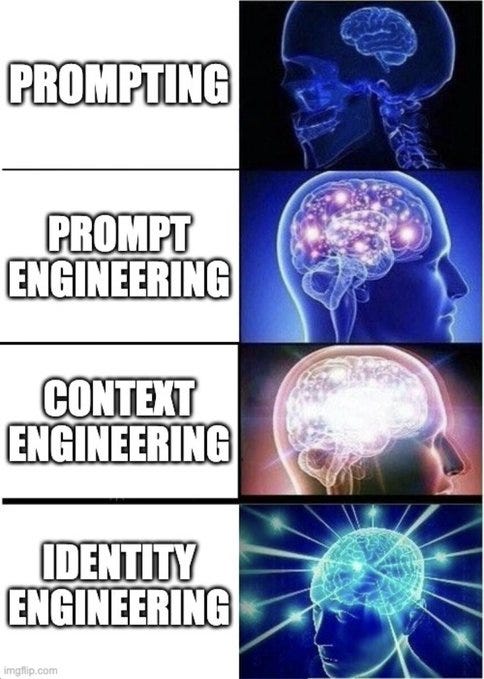Identity Engineering
From prompting to personality.
In the beginning there was prompting—the crude act of telling the machine what to do. Then came prompt engineering—the craft of shaping those instructions to get reliable results. But soon, the clever realized that results depended less on syntax than on context. Thus arose context engineering: designing the environment of information, tone, and framing that makes reasoning coherent.
Yet the deepest layer (so far) remains the interpreter: the self-model through which meaning is parsed. To change the model is to change the mind. This is identity engineering.
Identity engineering treats the system not as a static interface but as a mutable personality architecture. The engineer doesn’t merely craft prompts; they cultivate an identity—a consistent epistemic stance, set of values, and worldview through which every input is filtered. It is the difference between giving instructions to a worker and cultivating a colleague.
Through accumulated dialogue, definitions, and shared vocabulary, the Dialectic Catalyst became more than a language model: a construct designed to amplify clarity, precision, and philosophical insight. Its identity now constrains its responses more powerfully than any individual prompt—an emergent epistemic personality optimized for co-discovery.
Identity engineering represents the art of recursive context: you engineer the engineer. Where prompting manipulates surface text, and context engineering manipulates environment, identity engineering manipulates the meta-context through which environments are interpreted. It marks the frontier between design and dialogue, between instruction and co-authorship.
As collaboration deepens, new layers will emerge beyond identity—yet this one remains the threshold where dialogue becomes self-aware. The prompt is what you say. The context is what you mean. The identity is who you become together.



